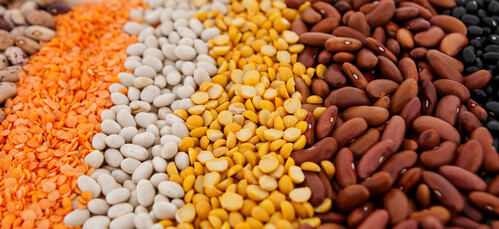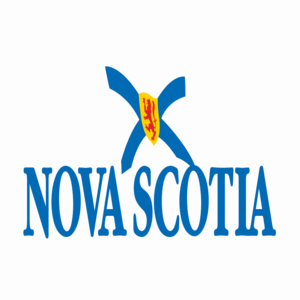farming
Type of resources
Available actions
Topics
Keywords
Contact for the resource
Provided by
Years
Formats
Representation types
Update frequencies
status
Scale
Resolution
-

This data shows spatial density of rye cultivation in Canada. Regions with higher calculated spatial densities represent agricultural regions of Canada in which rye are more expected. Results are provided as rasters with numerical values for each pixel indicating the spatial density calculated for that location. Higher spatial density values represent higher likelihood to have rye based on analysis of the 2009 to 2021 AAFC annual crop inventory data.
-

This data shows spatial density of pulses cultivation in Canada. Regions with higher calculated spatial densities represent agricultural regions of Canada in which pulses are more expected. Results are provided as rasters with numerical values for each pixel indicating the spatial density calculated for that location. Higher spatial density values represent higher likelihood to have pulses based on analysis of the 2009 to 2021 AAFC annual crop inventory data. Pulses consist of the following specfic crops types from the AAFC annual crop inventory; Pulses, Beans, Black Beans, Cranberry Beans, Faba Beans, Great Northern Beans, Kidney Beans, Lima Beans, Pinto Beans, Navy Beans, Red Beans, White Beans, Other Beans, Lentils, Peas, Chick Peas, Field Peas, White Peas, Other Peas, and Other Pulse
-

This data shows spatial density of beans cultivation in Canada. Regions with higher calculated spatial densities represent agricultural regions of Canada in which beans is more expected. Results are provided as rasters with numerical values for each pixel indicating the spatial density calculated for that location. Higher spatial density values represent higher likelihood to have beans based on analysis of the 2009 to 2021 AAFC annual crop inventory data.
-

Small area data on field crops show seeded and harvested area, yield and production figures for most principal field crops and some special crops in Canada, at the census agricultural region level (except for Quebec, where small areas are defined by provincial administrative boundaries). The provinces covered are British Columbia, Alberta, Saskatchewan, Manitoba, Ontario and Quebec. The data are available in metric and imperial units of measure, for periods ranging from 1976 to 2024. The data are derived from the results of the November Farm Survey of the preceding year, of which the production estimates were only expressed at the provincial level in early December.
-

In 2019, the Earth Observation Team of the Science and Technology Branch (STB) at Agriculture and Agri-Food Canada (AAFC) repeated the process of generating annual crop inventory digital maps using satellite imagery to for all of Canada, in support of a national crop inventory. A Decision Tree (DT) based methodology was applied using optical (Landsat-8, Sentinel-2) and radar (RADARSAT-2) based satellite images, and having a final spatial resolution of 30m. In conjunction with satellite acquisitions, ground-truth information was provided by: provincial crop insurance companies in Alberta, Saskatchewan, Manitoba, & Quebec; point observations from the PEI Department of Environment, Water and Climate Change and data collection supported by our regional AAFC Research and Development Centres in St. John’s, Kentville, Charlottetown, Fredericton, and Guelph.
-

In 2014, the Earth Observation Team of the Science and Technology Branch (STB) at Agriculture and Agri-Food Canada (AAFC) repeated the process of generating annual crop inventory digital maps using satellite imagery to for all of Canada, in support of a national crop inventory. A Decision Tree (DT) based methodology was applied using optical (Landsat-8) and radar (RADARSAT-2) based satellite images, and having a final spatial resolution of 30m. In conjunction with satellite acquisitions, ground-truth information was provided by provincial crop insurance companies and point observations from the BC Ministry of Agriculture and our regional AAFC colleagues.
-

In 2018, the Earth Observation Team of the Science and Technology Branch (STB) at Agriculture and Agri-Food Canada (AAFC) repeated the process of generating annual crop inventory digital maps using satellite imagery to for all of Canada, in support of a national crop inventory. A Decision Tree (DT) based methodology was applied using optical (Landsat-8, Sentinel-2) and radar (RADARSAT-2) based satellite images, and having a final spatial resolution of 30m. In conjunction with satellite acquisitions, ground-truth information was provided by: provincial crop insurance companies in Alberta, Saskatchewan, Manitoba, & Quebec; point observations from the BC Ministry of Agriculture, & the Ontario Ministry of Agriculture, Food and Rural Affairs; and data collection supported by our regional AAFC Research and Development Centres in St. John’s, Kentville, Charlottetown, Fredericton, Guelph, and Summerland
-

This data shows spatial density of Soybean cultivation in Canada. Regions with higher calculated spatial densities represent agricultural regions of Canada in which Soybeans are more expected. Results are provided as rasters with numerical values for each pixel indicating the spatial density calculated for that location. Higher spatial density values represent higher likelihood to have Soybeans based on analysis of the 2009 to 2021 AAFC annual crop inventory data.
-

[Archived] Deployment specifications for wave time series data collected at various locations throughout the waters of Nova Scotia by the Department of Fisheries and Aquaculture’s Aquaculture Division. This data has not been maintained or updated. Users looking for the latest information should refer to Nova Scotia Current and Wave Data: Deployment Information https://data.novascotia.ca/d/uban-q9i2.
-

A series of relevant spatial datasets were compiled to construct an Agricultural Potential Index model which combines multiple criteria that influence agricultural suitability. For more information on the Agriculutural Potential Index Model, please see the metadata link.
 Arctic SDI catalogue
Arctic SDI catalogue